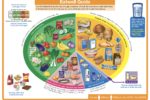Learning to accept and live with a chronic condition such as diabetes or coronary heart disease (CHD) is as crucial a part of treatment as medications. As eating outside the home is increasingly a feature of today’s society, it is important that patients with diabetes or CHD feel able to enjoy meals out without any feelings of guilt. In this article, we suggest practical tips for helping patients with diabetes and heart disease to eat out healthily.
























